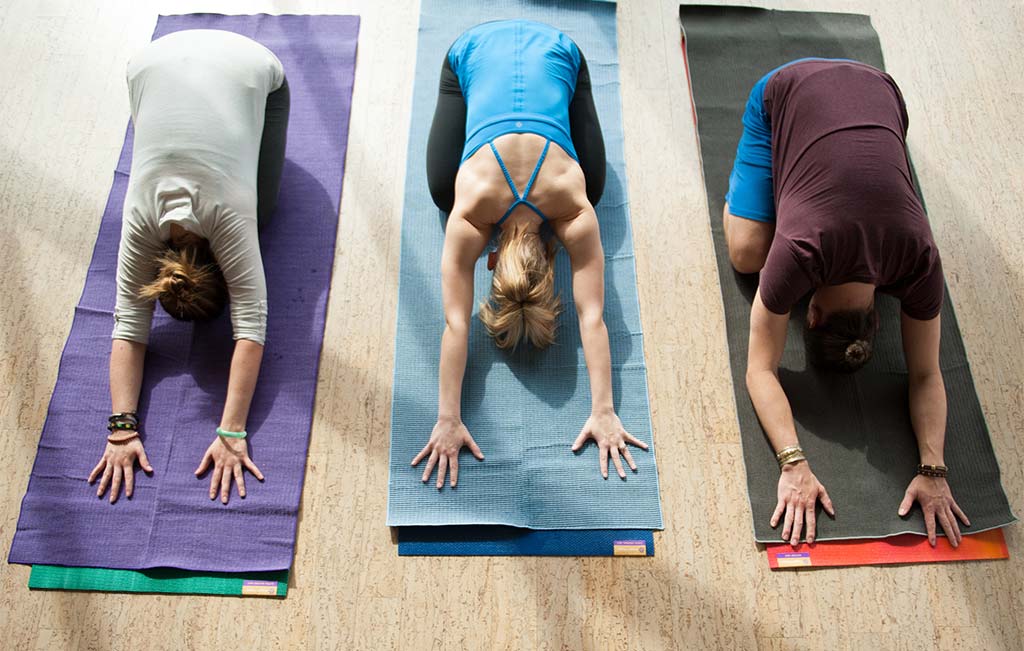
Balasana (Child’s Pose) quiets the mind and restores spent energy. It focuses the breath into the back body, the “rest and digest” (parasympathetic) side, and supports the natural outward expansion of the lungs on each inhalation. Like all forward bends, Child’s Pose turns our focus inward.
Balasana has been pigeonholed as a beginner’s pose. As such, is sometimes discounted by more experienced practitioners. It’s true that Balasana is accessible to most beginners, and is excellent for introducing beginners to the expansive world of their own back bodies. But I would argue that Balasana is not necessarily easy.
Because the mind is not overwhelmed by extreme sensation in Child’s Pose, it is far freer to wander than it is in the more physically demanding asanas. So while Balasana might not be challenging to our bodies, it can be quite challenging to our minds. In a culture where constant activity and the “no pain, no gain” philosophy is the norm, slowing down and resting in a comfortable pose can actually be quite uncomfortable psychologically. How can a pose that feels so good possibly be good for us?
Balasana is good for us precisely because it feels good. Child’s Pose mirrors the fetal position, the pose of ultimate comfort and security. In Balasana, our back expands and provides a protective shell for our delicate vital organs, which rest in relative calm on our thighs. Resting the forehead on the floor further quiets the mind. The result is a slowing of the breath and brain activity. Balasana is the perfect foil for an active yoga practice and an active life.
How to Practice Child’s Pose
- Begin on your hands and knees on a yoga mat or blanket. Take a moment to feel the weight on your hands. Are your palms contacting the floor evenly? Take a moment to even out your hands from side to side and from heels to fingers.
- Now settle your hips back onto your heels and rest your forehead on the floor. Stretch your arms out in front of you for a few breaths, lengthening all the way from your pelvic floor to the fingertips like a cat stretching out its paws. Take a few breaths with your arms actively extended, and then release your arms to your sides and turn your palms up. Allow your shoulder blades to slide out to the sides.
- Imagine that your back is shaped like a tortoise shell, and draw the breath into your back, expanding it out in all directions. Let your breath massage your back from the inside. On your exhalations, let go of any tension you feel anywhere in your body. Take as many breaths here as you like.
- When you are ready to come out of the pose, place your hands under your shoulders, ground your shins and knees, press with your hands, and slowly roll your spine up lifting your head last, so that you are sitting on your heels. Relax and breathe naturally.
While Balasana is accessible to most yoga practitioners (and non-practitioners), it is not advisable to practice it if you are pregnant. Balasana is also sometimes contraindicated for people with knee problems, although an experienced teacher may be able to show you how to use blankets to modify the pose so that you can practice safely.
Practice Balasana any time—between active poses in your yoga practice or when you need to slow down and regroup from a busy life. A life of balance includes activity and rest, outward and inward focus, sound and silence. Balasana can be your peaceful haven.
Updated article from June 7, 2011
